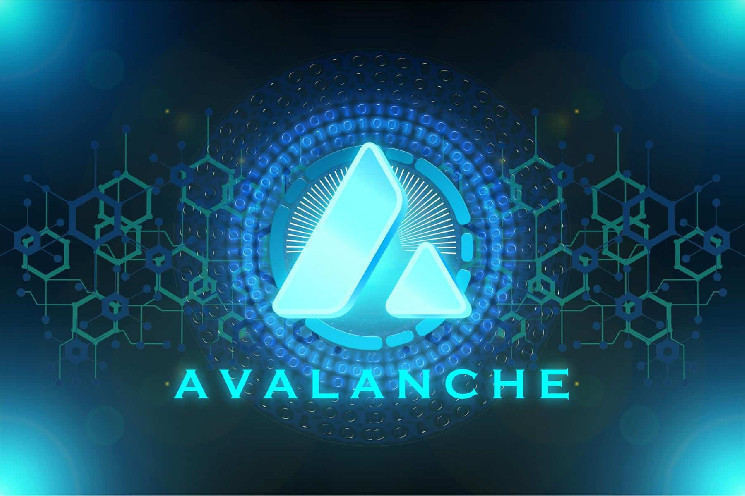- Citi has filed a new patent detailing a system for facilitating a double-layer restriction subnet architecture related to the bank’s development on Avalanche.
- AVAX has been consolidating right below the key resistance level at $28, which analysts say indicates an impending bullish breakout.
Citi, one of the world’s largest financial institutions, is expanding a project it started on Avalanche, this time filing for a patent on a system that facilitates a double-layer restriction subnet architecture.
Citi filed for the patent with the USPTO recently, describing a system that overcomes the technical limitations of conventional blockchains and their subnets.
Looks like @Citi filed for a patent related to the work they did on Avalanche🔺 last year regarding private oracles for transmitting RFQ (Request for Quotes).
"Double-layer restriction subnet architecture that overcomes the technical limitations of conventional blockchains." pic.twitter.com/V1exKnNkpT
— Luigi9000 🔺 (@luigidemeo) September 23, 2024
In its application, Citi says that the double-layer architecture it is building is made up of “a series of permissioned subnets, which provides both the security/privacy benefits of permissioned blockchains but also the scalability of subnet efficiency.”
The system seeks to solve the challenge of unauthorized access to digital communication by third parties. It notes that while blockchain-based encryption can curb the challenge, integrating blockchain remains a challenge for most, not least for its technical challenges. For instance, the instructions in a smart contract can’t be amended even if the conditions change, which leaves them vulnerable to malicious attacks.
“These security concerns, in turn, present challenges to integrating blockchain technology into traditional, centralized software infrastructures. Similarly, information posted to a blockchain becomes public, which can lead to privacy concerns,” Citi says.
The easiest fix is using a permissioned blockchain. However, this comes with its own set of challenges, including creating centralised attack targets and a lack of decentralisation, which limits the benefits of a blockchain.
With a public blockchain, the best fix is the use of subnets, which are secondary networks built atop the original Layer 1 chain for specific use cases. Subnets, in the blockchain world, have been popularised by Avalanche, where each subnet is regarded as a “sovereign network which defines its own rules regarding its membership and token economics.”
But even these subnets are not foolproof. Citi notes that if the underlying network has security or scaling issuers, the subnets inherit the same, risking their users.
The $117 billion American bank proposes a solution that has a double-layer restriction subnet architecture.
“In particular, the double-layer restriction subnet architecture comprises a series of permissioned subnets, which provides both the security/privacy benefits of permissioned blockchains but also the scalability of subnet efficiency,” the bank says.
The patent application by Citi builds on its work on Avalanche from earlier this year. As we reported, the bank tested the tokenization of private equity funds on the Spruce Subnet. It partnered with Wellington Management, a $1.4 trillion investment manager, and WisdomTree, an ETF expert.
Meanwhile, AVAX trades at $27.59, dipping slightly on the day despite a 12% rally in the past week.
